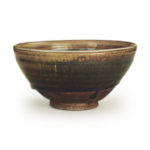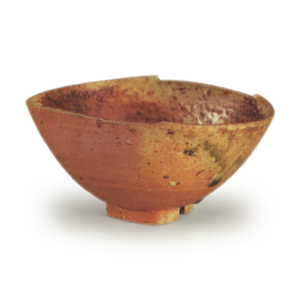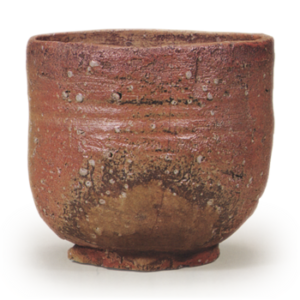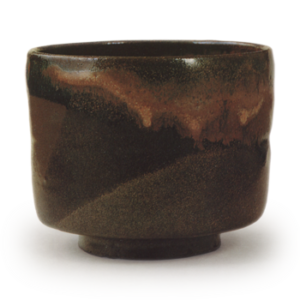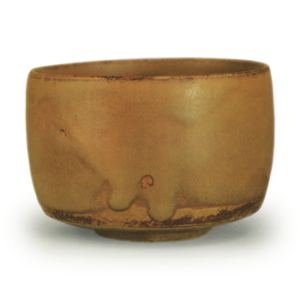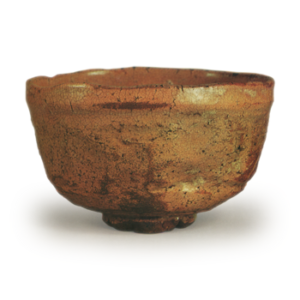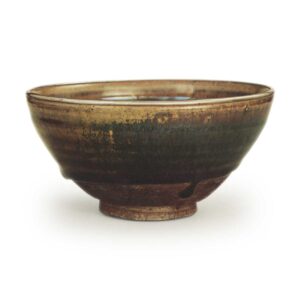
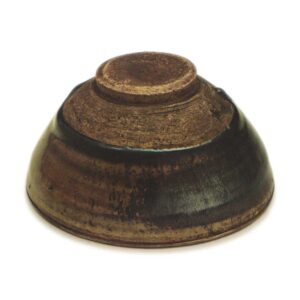
One name: Koutenmoku
Fujita Art Museum
Height: 6.0 – 6.3 cm
Diameter: 11.9 – 12.0 cm
Foot diameter: 4.7 – 4.9 cm
Height: 0.9 cm
It is also called Koutenmoku, but in terms of its shape, it is probably the same type as the Koutenmoku mentioned above.
Although they look different in terms of glaze color, etc., they are very similar when examined closely, and were probably made in the same kiln at around the same time.
The clay is dirty from handling and looks dark, but it was originally a white, hard clay that is almost like a porcelain body. The footring of the previous piece is smaller, while this one is wider. However, the way they were carved is exactly the same. The technique of carving the rim of the foot ring horizontally, slightly chamfering the corners of the foot ring, and slightly scraping the inside is the same for both. In terms of the overall shape, the diameter of this piece is longer than its height, and combined with the wide foot ring, it gives the impression of being flat, but the form itself is the same.
In this context, the glaze tone looks quite different. Even though it is the same yellow Tenmoku, the color here is paler, and the coloration is similar to that of Kikuzara-te yellow Seto. This color is probably due to the composition of the overglaze. If that were the only difference, it would be just a difference in the shade of color, but some of the yellow glaze has a black mottled appearance, like sesame seeds, which makes the difference in the glaze even more pronounced.
As you can see in the photo, this black mottling extends about halfway across the surface of the glaze, both inside and out.
You could say that it is like wearing a kimono with a yellow and black pattern. If you look closely at the black areas, it seems that they are made up of crystals of iron in the glaze that have gathered together. In the areas where the black areas meet the yellow glaze, the crystals are scattered as black dots, while in the darker black areas, they are densely packed together to form a silvery black rabbit’s fur glaze with a blue sheen. In short, it can be said that the crystals of the underglaze, which are the same as the oil spots and rabbit’s fur spots, have appeared in various forms.
However, even so, why did it turn out like this? It is difficult to think that the iron content of the underglaze gathered on one side due to the heat. Perhaps, when applying the underglaze, the glaze was applied to the entire surface, but then the overglaze was carelessly applied and fired without being removed. If this is the case, it would be a kind of mistake, but it turned out to be a fortunate mistake that produced an interesting effect.
And as if to enhance this view even further, the glaze on this tea bowl has the same iridescent film as the previous piece, and it emits a mysterious light. It is not without reason that it is called “rainbow tenmoku”. The glaze on the outside is also a deep black, and there is a pattern of rabbit fur running across it, similar to the pattern on a rabbit’s back.
The history of this tea bowl is not clear, but it is thought to have come from the collection of a feudal lord. There are faint traces of vermilion lacquer on the underside of the foot ring, and if these could be read, they would probably provide some clues, but unfortunately they are not legible.

